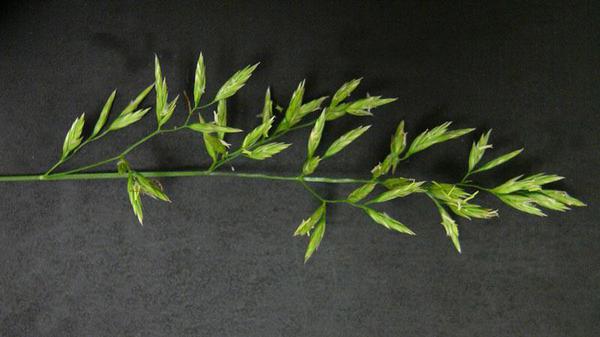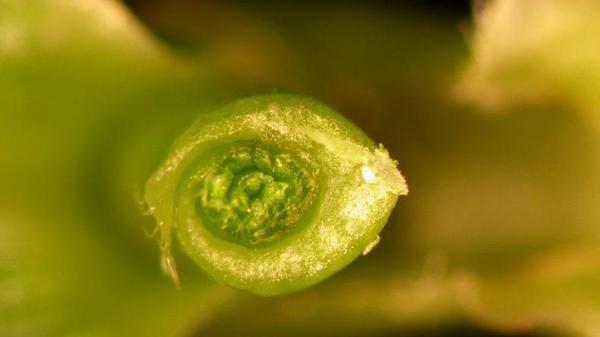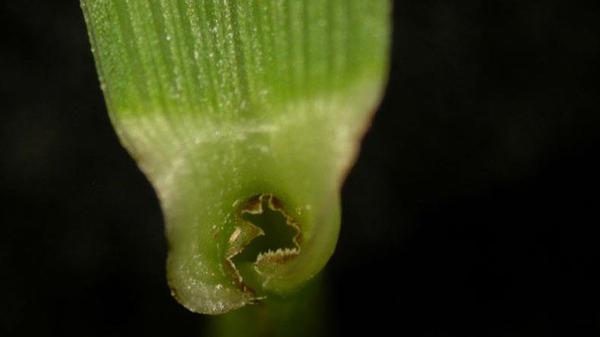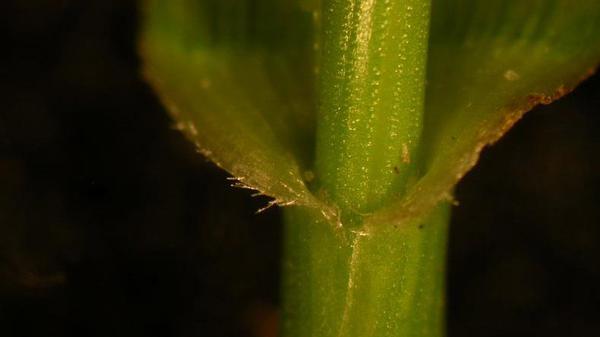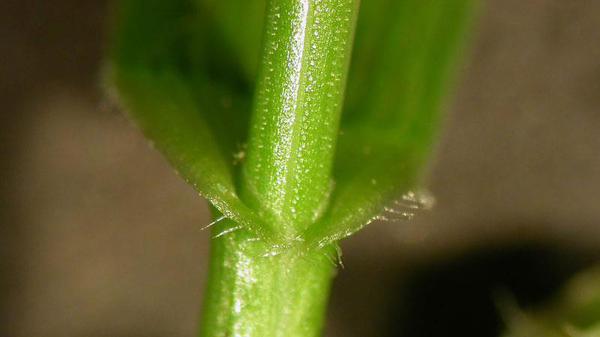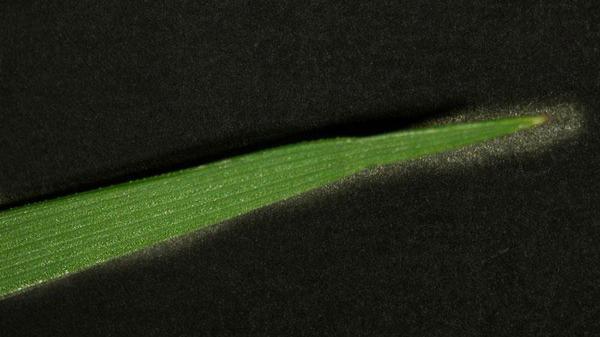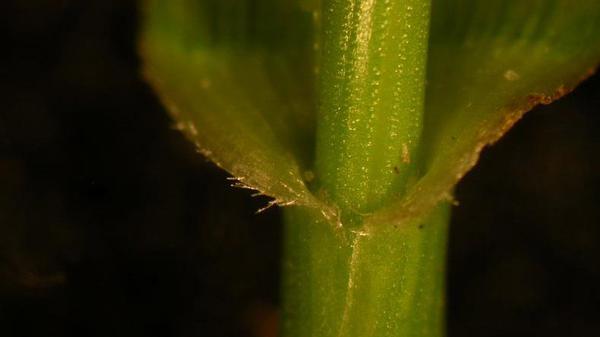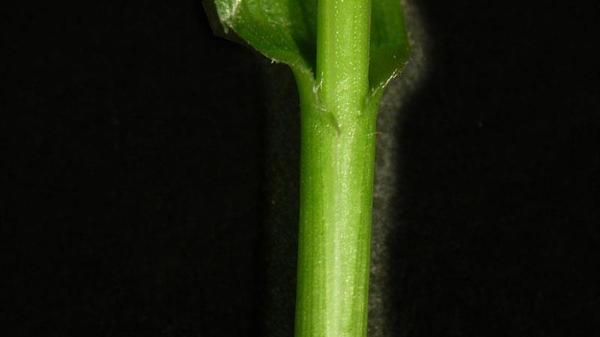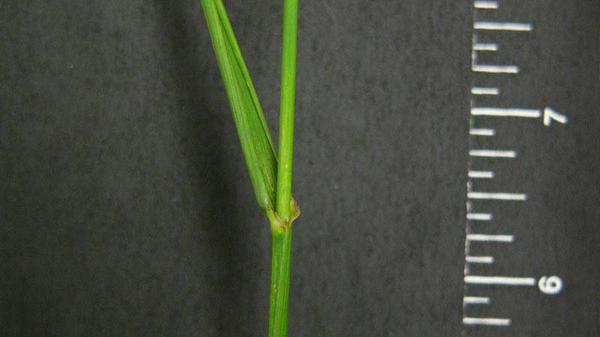Description
Tall fescue (Festuca arundinacea) is the most widely grown cool-season species in North Carolina. For a cool-season species, tall fescue is tolerant to heat and drought, disease resistant, and persists with minimum care. It has a tendency to clump due to its bunch-type growth habit and may need to be re-seeded each year in areas that exhibit thin growth patterns due to excessive summer stresses. Tall fescue is easily confused with Kentucky bluegrass, annual ryegrass, and perennial ryegrass. However, Kentucky bluegrass has a boat-shaped leaf tip and distinctive light-colored lines on both sides of the midrib. Tall fescue has rolled vernation in the leaf bud and perennial ryegrass has folded vernation. Also, tall fescue has rough leaf blade margins whereas annual and perennial ryegrass have smooth ones. Tall fescue and perennial ryegrass both have non-clasping auricles, whereas annual ryegrass has clasping auricles. The backside of the tall fescue leaf blade is less glossy than that of annual ryegrass.
Lawn and Athletic Field Maintenance
- For a month-by-month tall fescue lawn maintenance calendar, see Tall Fescue Lawn Maintenance Calendar, AG-367
- For information on athletic field maintenance, see Carolina Athletic Fields: A Guide to Maintaining Quality Turf on Athletic Turf, AG-746
Tall Fescue as a Weed
Cultural Control
Most turfgrasses are difficult to control within another turfgrass. Therefore, turf managers should select clean seed or vegetative sources for establishment, use an adapted turfgrass species and cultivar for their location, and use proper mowing and fertilization techniques to maintain a dense, actively growing, desired turf. Digging or removal with hand or mechanical equipment, for example a sod cutter, is one way to control undesired perennial turfgrasses. You may spot treat an infested area with an appropriate non-selective herbicide, realizing it will also kill the desired turfgrass.
Species Data
- SEEDHEAD / FLOWER
- terminal panicle
Figure 1
- terminal panicle
- VERNATION TYPE
- LIGULE TYPE
- membranous; collar-like, 0.02 inches (0.5 mm) or less long, very jagged
Figure 4
- membranous; collar-like, 0.02 inches (0.5 mm) or less long, very jagged
- GROWTH SEASON / LIFE CYCLE
- cool season turf or perennial weed
- AURICLE TYPE
- LEAF BLADE TIP SHAPE
- sharp-pointed; deeply ridged above, glossy below, prominent midrib below, edges rough
Figure 7
- sharp-pointed; deeply ridged above, glossy below, prominent midrib below, edges rough
- STOLON PRESENCE
- absent
- RHIZOME PRESENCE
- occasional and short
- COLLAR TYPE
- divided; may be hairy on edges
Figure 8
- divided; may be hairy on edges
- SHEATH MARGIN
- open
Figure 9
- open
- SHEATH TYPE
- round; sheath is smooth
Figure 10
- round; sheath is smooth
Publication date: Aug. 22, 2022
N.C. Cooperative Extension prohibits discrimination and harassment regardless of age, color, disability, family and marital status, gender identity, national origin, political beliefs, race, religion, sex (including pregnancy), sexual orientation and veteran status.

